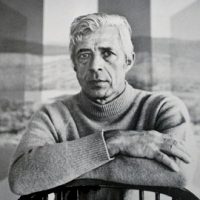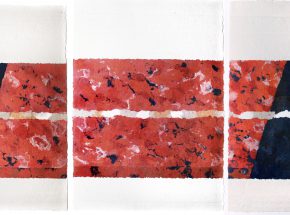

James Twitty studied painting and drawing at the University of Miami Florida and the Art Students League of New York City. He was Associate Professor of Painting at the Concoran School of Art in Washington D.C. and Studio Lecturer in the Fine Arts at The George Washington University. He was also Exchange Professor to the Leeds College of Fine Arts in England, and Guest Artist at the Art Centers in San Antonio, Texas and Miami Florida.
He was a Life Member of the Art Students League of New York City, a member of the Houston Society of Painters and Sculptors and Artist Fellow of the Aspen Institute for Humanistic Studies and was listed in numerous references including “Who’s Who in American Art” and “Who’s Who in America.”
His work, primarily acrylic and oils, are in the permanent collections of the National Gallery of Art and the Corcoran Gallery of Art, both in Washington D.C.; the Brooklyn Museum; the Baltimore Museum of Art; the Dallas Museum of Fine Arts; the Milkwaukee Arts Center; the Minnesota Museum of Art; the High Museum in Atlanta; the Houston Museum of Fine Arts; the San Francisco Museum of Art and others.
Mr. Twitty’s paintings have been exhibited for more than 10 years in the White House and have appeared in various motion pictures and television programs. His work is included in numerous corporate collections such as Atlantic Richfield; Bank of America; Bell Telephone; Continental airlines; E.F. Hutton; Martin Marietta; Mitsubishi Bank of Tokyo; Motion Picture Association; Nabisco; Occidental Petroleum; Pepsi-Cola; 3M Company; TransAmerica Corporation; the Washington Post; H.J. Heinz; London Observer and others. His paintings are in private collections throughout the world.
He has had over 40 one-man exhibitions including ten in New York City and others in Chicago, Dallas, Houston, Palm Beach, Sarasota, Naples, Scottsdale and elsewhere in the United States and Canada, and overseas in Portugal, Belgium, Scotland, England and Switzerland.
“James Twitty is neither a realist nor a non-objectivist; rather he has created his own idiom which belongs to our time, but is not directly linked to any of the current styles. He might be termed an evocativist because his pictures are primarily challenges to our imagination and their meaning will vary according to the experience, perception, fantasy, memory and education of those who experience them. Thus some will see in his distant views maelstroms of tempestuous seas, others idyllic landscapes of flowering meadows, lava flows of threatening rocks, apocalyptic storm clouds, or moonlit visions of placid seaways, gateways to infernos, or visions of peace and rest. His paintings are as much investigation into the subconscious yearnings and fears of the viewer as they are of evidence of his talent as a painter. The enigmatic landscapes are made even more effective by the geometric shapes which serve as catalysts to the scenes behind. The straight lines contrast dramatically with the untamed elements, and the semblance of perspective seems to give some assurance of safety as we look out over his never-never lands. They seem like windows of a spaceship through which we look at an unexplored wildly beautiful planet.
Yet another element which contrasts with both the untamed landscapes the geometric forms is the color harmony James Twitty has perfect pitch for color . His color harmonies are never saccharine nor harsh but unite his strange and challenging worlds as supplement to his exquisite and evocative combination of the known and unknown.”
Hereward Lester Cooke
Ex-Curator/National Gallery of Art,
Washington D.C.
www.jamestwitttygallery.com/Biography.html


